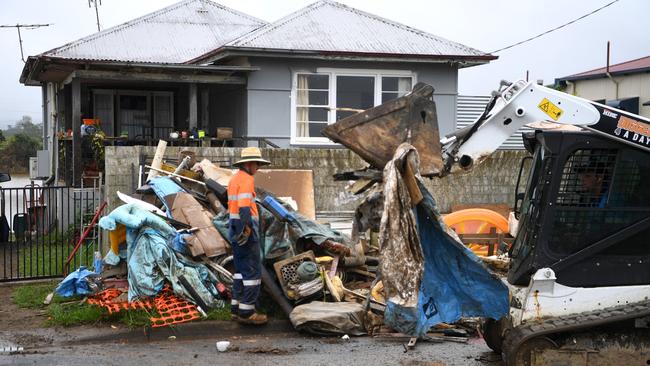
And in both floods and bush fires, we discover that in some areas, Australia is actually using and developing world class systems. In fire, the US is tapping our knowledge base. And even the tragic Sydney floods showed that some of our flood management systems worked well, but they had not always been installed in vulnerable areas. But systems don’t always work.
I can still remember the 1954 Lismore floods. In the decades that followed, Lismore invested in better and better flood control mechanisms. However, tragically the floods became worse so the systems often failed, as occurred in 2022.
The Lismore 2022 lesson shows that no investment in flood control has certainty in very vulnerable areas, but in other areas there are techniques available to greatly reduce the excess water impact.
For example, in Sydney very few, if any, underground carparks in apartment towers were flooded. They had been required to install special drainage systems and those systems worked. An adaptation of those drainage systems is now a requirement in new developments. They involve tanks that can moderate the flow of water. Those tanks and associated facilities saved a large number of recently erected houses from flood. But the recent boom in Sydney house construction has been so frenetic that some homes were built before the tank system was installed.
Worse still, there are a large number of areas in Sydney where houses were built some years ago before the current requirements. Sydney Water never went back and installed the tank protection system so many houses in those areas were flooded unnecessarily.
So an important lesson from the Sydney floods is that provided apartments are not placed in a precarious situation, they can manage these dramatic rain falls. The same applies to a large number of separate dwellings where water management systems are in place.
In the coming years, the Sydney Water will need to undertake a lot of back log work to install tank-based drainage systems in vulnerable areas where they currently don’t exist. It’s a big task with considerable implication to the development of Sydney given that we are about to see notable migration increases.
Last week I attended a Victorian hospital as a visitor and watched a Hong Kong nurse looking after a patient. He had been in Australia for just four days but was clearly highly skilled and personable. A lot of his friends had also arrived. To me that was a signal that there are a great many skilled people in Hong Kong wanting to come to Australia. And then add Ukraine.
Sydney, Melbourne plus other areas of Australia are going to see large increases in migration and probably students and there is simply not the housing available. My guess is that at least in Sydney. with the water authority concentrating the back log, more new dwellings will need to be apartments. It’s vital for all governments to streamline their approval (and rejection) processes. The current rules of the jungle need to end so we are ready for the increase in migrants and students.
In the case of fire, bush fire experts from Victoria were invited to the US to advise on the cause of the giant fires that have plagued California and other areas. They found that there were three key causes: First California had under invested in modern power transmission lines and these old lines probably sparked the majority of the fires. There had not been proper management of the forests to allow easy access. And finally, and most importantly, the US undertakes a lot of its bushfire fighting with city trained fire fighters.
The skills and techniques required to fight a city building are totally different to the way you fight a bushfire. In both Victoria and New South Wales, we have given highly skilled city fire fighters responsibility in rural fire fighting so duplicating the Californian mistake. It is like a carpenter being asked to be an electrician.
Australia has greatly improved its power lines, but they are still not perfect. We have great difficulty in managing our forests because greens don’t want any access to them. Accordingly, we have work to do but we can learn from the Californian disasters.
Finally, some good news on the fire front. In a small town on the Victorian surf coast all the parties involved (including arms of government, bush fire fighters, environmentalists, indiginous communities, property owners etc) came together and put a fire break around the town. And they are now using aboriginal slow burning techniques to maintain that fire break.
It might be a Lismore and not work in a fire crisis, but it a lot better than doing nothing. Australia needs to invest in fire and flood protection.







In the last three years, Australia has suffered disastrous bush fires and floods. If the climate activists are right, then this pattern is likely to continue so we need to invest in infrastructure and management systems to manage this increased risk.